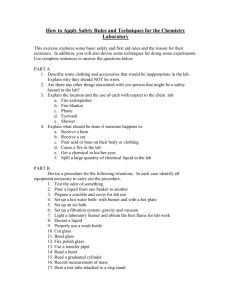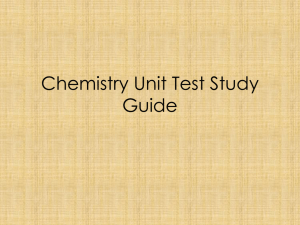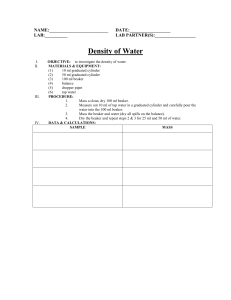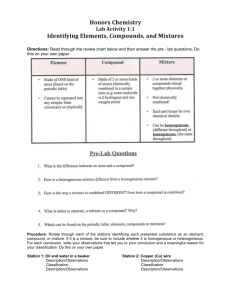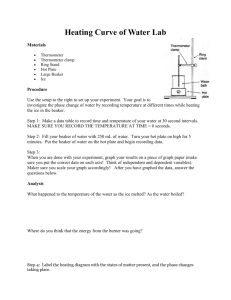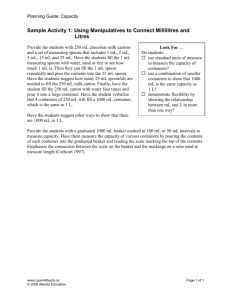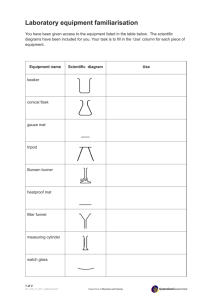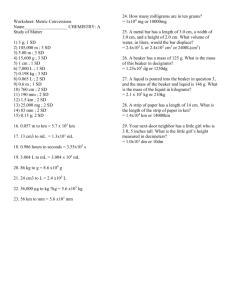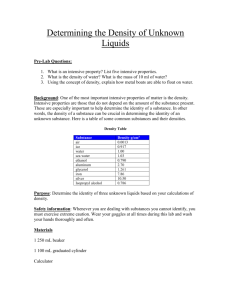Lab directions
advertisement
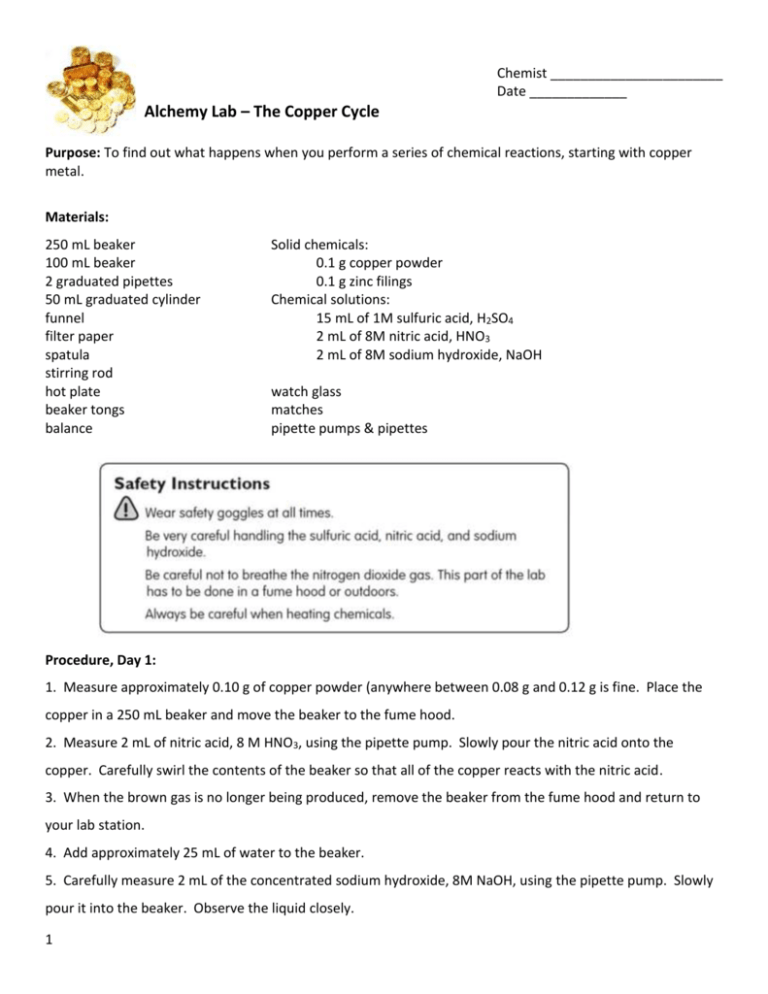
Chemist _______________________ Date _____________ Alchemy Lab – The Copper Cycle Purpose: To find out what happens when you perform a series of chemical reactions, starting with copper metal. Materials: 250 mL beaker 100 mL beaker 2 graduated pipettes 50 mL graduated cylinder funnel filter paper spatula stirring rod hot plate beaker tongs balance Solid chemicals: 0.1 g copper powder 0.1 g zinc filings Chemical solutions: 15 mL of 1M sulfuric acid, H2SO4 2 mL of 8M nitric acid, HNO3 2 mL of 8M sodium hydroxide, NaOH watch glass matches pipette pumps & pipettes Procedure, Day 1: 1. Measure approximately 0.10 g of copper powder (anywhere between 0.08 g and 0.12 g is fine. Place the copper in a 250 mL beaker and move the beaker to the fume hood. 2. Measure 2 mL of nitric acid, 8 M HNO3, using the pipette pump. Slowly pour the nitric acid onto the copper. Carefully swirl the contents of the beaker so that all of the copper reacts with the nitric acid. 3. When the brown gas is no longer being produced, remove the beaker from the fume hood and return to your lab station. 4. Add approximately 25 mL of water to the beaker. 5. Carefully measure 2 mL of the concentrated sodium hydroxide, 8M NaOH, using the pipette pump. Slowly pour it into the beaker. Observe the liquid closely. 1 6. Place the beaker on a hot plate and set the hot plate to medium. Stir with a glass rod while heating. Continue heating until a solid appears in the solution (this may take up to 10 minutes). 7. Use beaker tongs to move the beaker from the hot plate to the lab table. Allow the beaker to cool before proceeding. 8. Filter the solution with a funnel and a piece of filter paper. STOP FOR THE DAY! Procedure, Day 2: 9. Using a small spatula, gently scrape the solid from the paper into a 100 mL beaker. 10. Measure out 15 mL of sulfuric acid, 1M H2SO4, using the pipette pump. Slowly, while stirring, add the sulfuric acid to the 100 mL beaker. As you add the acid, watch for any changes to the liquid and solid. 11. Measure approximately 0.1 g of zinc filings (anywhere between 0.08 g and 0.12 g is fine). Add the zinc to the beaker. Stir the solution until it is colorless. Record your observations. 12. Pour off most of the liquid into the correct waste container, making sure not to pour away any of the solid at the bottom of the container. 13. Add about 10 mL of water, swirl the solution, and again pour off most of the liquid into the correct waste container. Record your observations. 14. Obtain a dry watch glass. Measure the mass of the watch glass alone. Write your groups initials on the watch glass using a Sharpie marker. 15. Place the entire solid from your beaker (step 13) on the watch glass. You may use a spatula to scrape any small particles on the watch glass. Place the watch glass with the solid in the drying oven. 16. Once your solid is dry, measure the mass of the watch glass + solid. Dispose of the solid in the proper waste container. 17. Subtract the mass of the watch glass + solid from the mass of the watch glass alone to calculate the mass of the solid that you recovered. 2
